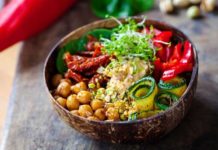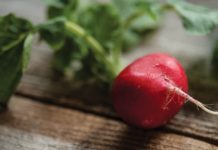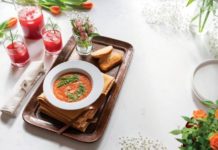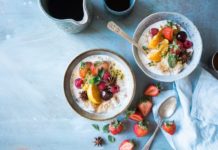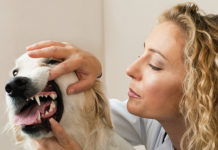
Are you eyeing up echinacea and elderberry now that cold and flu season is fully underway? Good. That’s wise of you. But minimizing sick days isn’t just a matter of which supplements you use to kick a cold or flu virus’s ass; it’s a matter of when you take them.
Here’s your three-part plan for a strong immune system this winter. It’ll help you tailor your use of natural treatments based on the stage of the illness.
Supplements for colds and flus
Before we get into the three stages of supplementing, it’s important to know that while the common cold and flu are caused by different viruses, natural management is similar for both. The relevant supplements can be divided into two groups: immune modulators and antimicrobials.
Immune modulators strengthen the immune system’s ability to fight infection. For instance, herbs in this category may increase the antiviral activity of T-lymphocytes, natural killer (NK) cells, and other immune cells.
Antimicrobial agents have direct effects by killing the bacteria or virus, often by causing damage to the bacterial membrane or viral envelope.
Stage 1: Prevention
Probiotics, vitamin D, and vitamin C function as immune modulators.
The evidence
A 2015 Cochrane meta-analysis evaluated 12 studies and 3,720 participants, including children. The results showed that supplementation with probiotics was superior to placebo for reducing the number of participants who experienced an acute upper respiratory tract infection (URTI). Probiotics also cut back the average duration of acute URTIs and antibiotic prescription rates for acute URTIs. The probiotics even reduced cold-related school absences!
Among those with vitamin D deficiency, supplementation is consistently associated with benefits to immunity. Daily vitamin D supplementation has been shown to reduce incidence of influenza A in schoolchildren.
Plus, a randomized trial of 400 infants found that high doses of vitamin D reduced the incidence of influenza A compared low doses (78 versus 43 cases). Duration of fever, cough, and wheezing was shorter, and the viral loads decreased more rapidly in the high-dose group.
The reason to take vitamin C, according to a recent meta-analysis, isn’t so much to prevent colds full stop, but rather to prevent long-lasting, serious colds. The analysis of 29 trials involving 11,306 participants found that vitamin C reduced duration of colds by 8 percent in adults and 14 percent in children. The severity of colds was also significantly reduced.
Stage 2: Treatment
Garlic (Allium sativa), Echinacea species, and elderberry (Sambucus nigra) extracts have been shown to exert potent antiviral effects.
The evidence
A randomized trial of 120 adults found that aged garlic extract increased T-lymphocytes and NK cells and reduced the severity and duration of cold and flu symptoms. Garlic contains allicin, which has been shown to kill viruses such as rhinovirus (which causes many common colds ) and parainfluenza virus.
A randomized trial of 473 patients with early flu symptoms (symptoms occurring for fewer than 48 hours) found that a daily combination echinacea and elderberry extract taken for 10 days was as effective as the prescription flu medication oseltamivir for reducing the duration of illness and had fewer side effects.
Finally, a recent meta-analysis including 180 participants revealed that Sambucus nigra (black elderberry) was found to “substantially reduce upper respiratory symptoms.” Authors concluded that elderberry may be a “potentially safer alternative to prescription drugs for routine cases of the common cold and influenza.”
Stage 3: Recovery
People who are having a hard time getting back on their feet after a cold or flu may want to continue supplementation with vitamin C, vitamin D, and probiotics. Adding Astragalus membranaceus can give them a big boost too.
The evidence
Astragalus is an immune tonic herb and an adaptogen for the immune system. Astragalosides, which are a major active component, have immune-regulatory and anti-inflammatory effects, including inducing T-cells and inhibiting pro-inflammatory cytokines.











